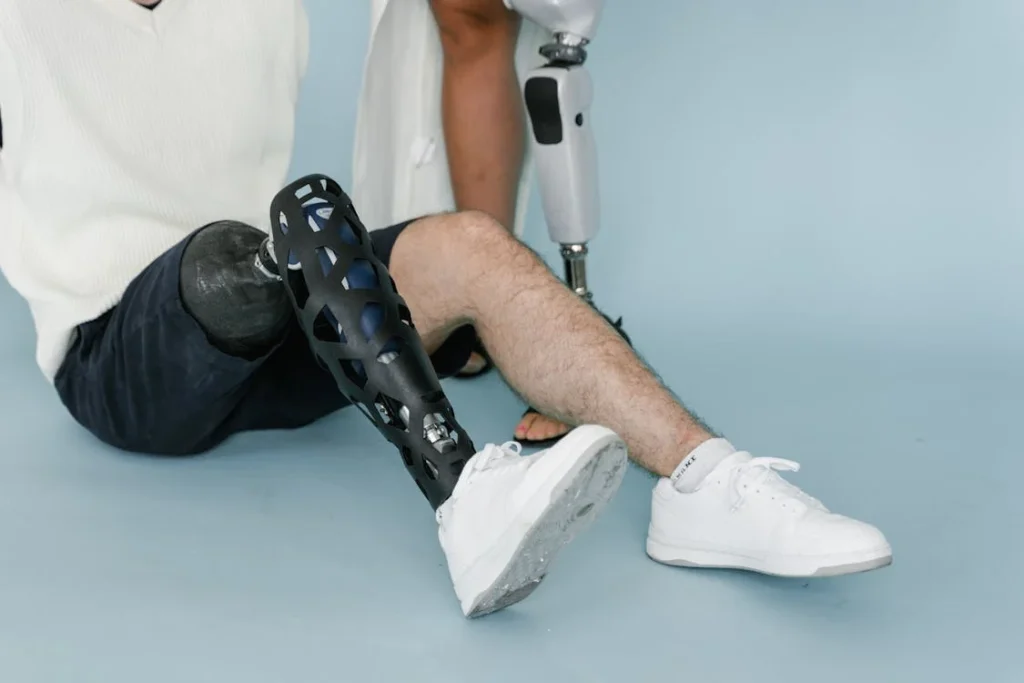Losing a limb is life-changing, but the challenges do not always end with the physical loss. Many people experience phantom limb pain (PLP)—a strange and often distressing sensation where the missing limb still feels present, sometimes with pain, tingling, or burning sensations. This pain is real, even though the limb is no longer there, and it can take a heavy toll on mental health.
Phantom limb pain can be frustrating, confusing, and emotionally exhausting. It can disrupt sleep, interfere with daily life, and lead to feelings of helplessness. Many people who experience it also struggle with anxiety, depression, or even post-traumatic stress. While medical treatments exist, coping with PLP also requires emotional resilience, mental strategies, and lifestyle adjustments.
Understanding the connection between phantom limb pain and mental health is the first step toward relief. This guide will explore why PLP happens, how it affects emotional well-being, and most importantly, how to cope with the mental and emotional toll so you can regain control over your life.
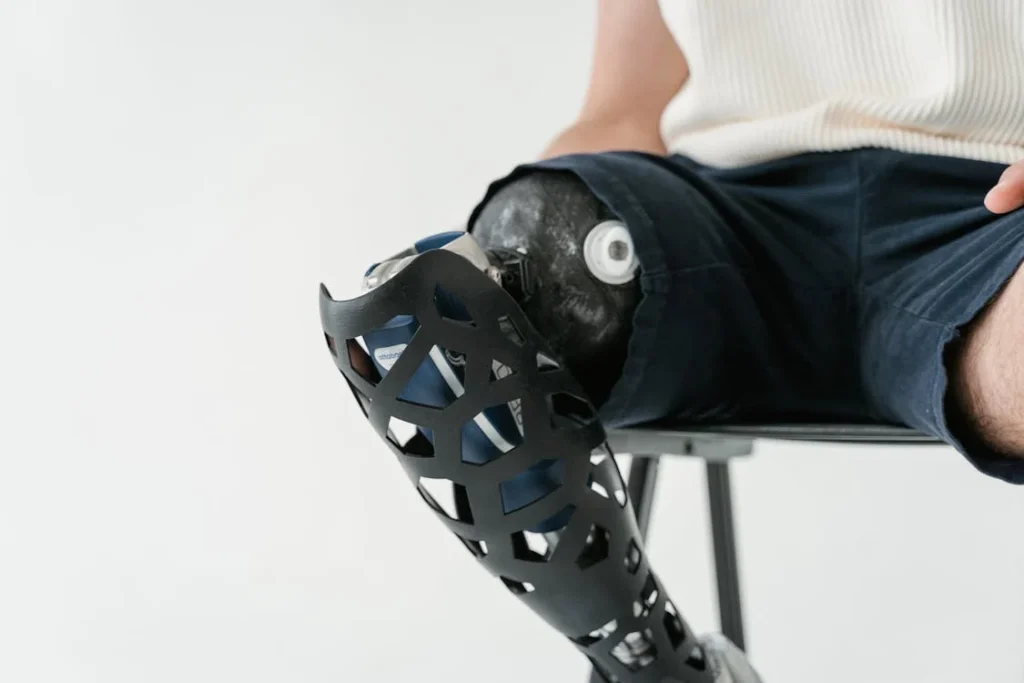
Understanding Phantom Limb Pain and Its Emotional Impact
Phantom limb pain (PLP) is more than just a physical sensation—it is deeply connected to the brain and nervous system. When a limb is lost, the brain still holds a “map” of it, creating the illusion that the missing limb is still present.
This can lead to sensations ranging from mild tingling to severe pain. Because the brain is struggling to process this new reality, PLP can be unpredictable, varying in intensity and duration.
Why Does Phantom Limb Pain Happen?
Scientists believe that PLP occurs because the brain is trying to make sense of the missing limb. The nervous system, which once controlled movement and sensation in the lost limb, continues to send signals, creating pain where the limb used to be.
Some researchers suggest that these sensations happen due to nerve damage, brain rewiring, or even psychological factors like stress and anxiety.
Triggers for PLP vary from person to person. Some experience it after touching the residual limb, while others notice it during moments of stress or fatigue.
Certain environmental factors, like changes in temperature or pressure, can also intensify the pain. This unpredictability can make PLP emotionally draining, as people may feel helpless in preventing or controlling their symptoms.
The Mental Toll of Phantom Limb Pain
Chronic pain is exhausting, not just physically but mentally. Living with phantom limb pain can lead to frustration, anxiety, and even depression.
Many people describe feeling trapped by pain they cannot control, leading to emotional distress and sleep disturbances. Over time, this can create a cycle where pain fuels anxiety, and anxiety makes the pain worse.
For some, PLP serves as a constant reminder of their amputation, making it difficult to move forward emotionally. It can bring back memories of the accident or surgery, triggering post-traumatic stress disorder (PTSD) in some cases.
Others may struggle with feelings of isolation, especially if those around them do not fully understand what they are going through.
Phantom limb pain also affects confidence and independence. The fear of pain returning at any moment can make people hesitant to engage in daily activities, leading to social withdrawal. Over time, this can impact mental health, making it harder to find joy in everyday life.
Breaking the Cycle of Pain and Emotional Distress
While phantom limb pain can be challenging, it is important to remember that it is manageable. The connection between the mind and body means that addressing mental health can often help reduce the severity of PLP.
Many treatment approaches focus on retraining the brain, calming the nervous system, and managing emotional responses.
The key to coping is learning how to respond to the pain rather than feeling powerless against it. Developing mental strategies, seeking support, and making lifestyle adjustments can all help reduce both the physical pain and the emotional burden it creates.
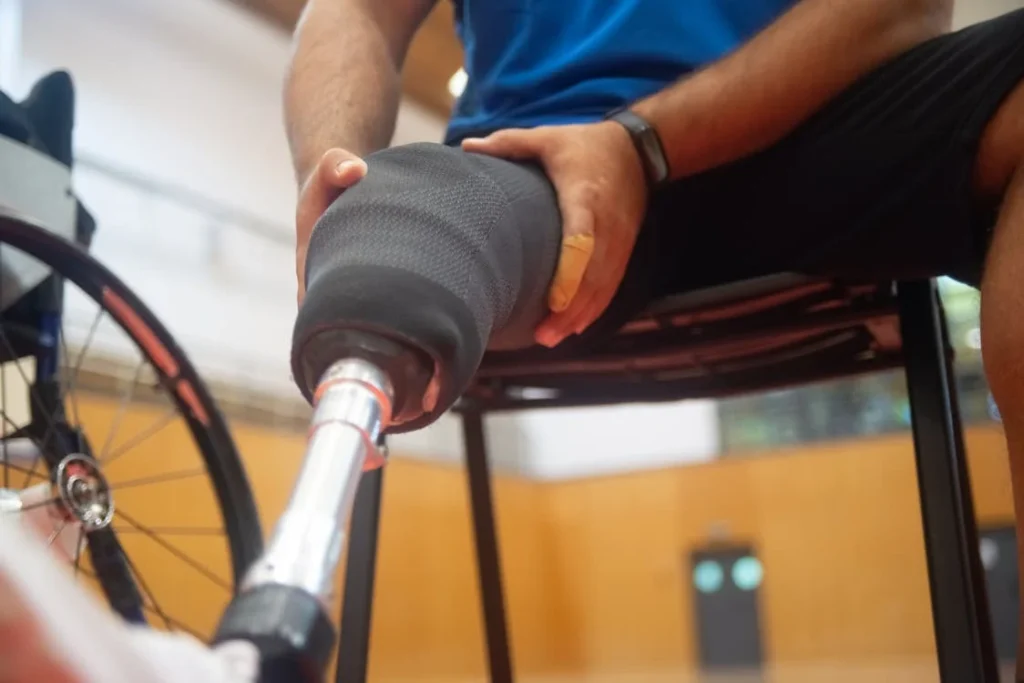
Understanding Phantom Limb Pain and Its Psychological Impact
Phantom limb pain is a condition where the brain continues to feel sensations, including pain, from a limb that is no longer there. The brain’s neural pathways are wired to receive signals from every part of the body.
When a limb is lost, these pathways do not immediately adjust, leading to confusion in the nervous system. As a result, the brain continues to interpret signals as if the missing limb still exists.
The pain can feel like burning, stabbing, throbbing, or cramping. It can be mild, or it can be intense enough to disrupt daily life. Some people experience it only occasionally, while others deal with it every day.
The unpredictability of PLP can be one of its most frustrating aspects, making it difficult to plan ahead or feel in control.
Why Phantom Limb Pain Affects Mental Health
The link between phantom limb pain and mental health is strong. The brain is not only responsible for physical sensations but also for emotional regulation.
When PLP is persistent, it can trigger feelings of anxiety, stress, and frustration. The pain itself can cause sleep disturbances, leading to exhaustion and irritability.
Over time, the constant discomfort can make it difficult to focus on work, relationships, or even simple daily activities.
For many, phantom limb pain serves as a constant reminder of their limb loss, making it harder to emotionally heal. This can lead to sadness, anger, or even feelings of grief for the life they had before.
Some people also develop depression, feeling as if they have lost control over their bodies and their futures. When pain becomes chronic, the risk of mental health struggles increases.
The Emotional Cycle of Chronic Pain
Living with ongoing pain creates an emotional cycle that can be difficult to break. When pain strikes, stress levels rise. The body responds by releasing stress hormones like cortisol, which can make pain feel even worse.
As stress increases, sleep may suffer, and exhaustion can lead to a lower tolerance for discomfort. Over time, this cycle can lead to emotional burnout, where even small challenges feel overwhelming.
The frustration of dealing with pain that others cannot see can also create a sense of isolation. You might feel misunderstood, as if no one truly gets what you are going through. This can make it harder to reach out for support, leading to loneliness and emotional distress.
Understanding that phantom limb pain is both a physical and psychological experience is crucial. Managing PLP is not just about treating the body—it is about taking care of the mind as well.
By learning coping strategies and seeking the right support, you can break the cycle of pain and emotional distress and regain a sense of control over your life.
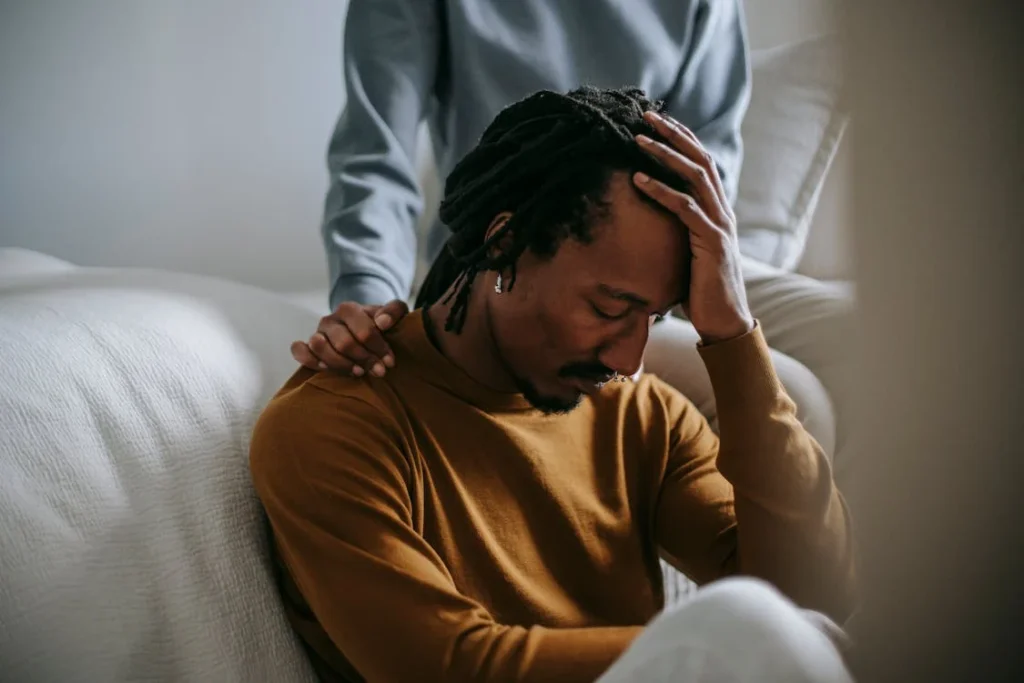
Coping with the Emotional Toll of Phantom Limb Pain
Phantom limb pain is not just a physical sensation—it deeply affects emotions, thoughts, and overall well-being. The pain itself can be exhausting, and when combined with feelings of frustration, sadness, or helplessness, it can take a serious toll on mental health.
Learning how to manage both the physical pain and the emotional impact is essential for long-term healing.
Acknowledging and Accepting Your Feelings
One of the hardest parts of dealing with phantom limb pain is coming to terms with it. Many people feel angry, confused, or even betrayed by their own bodies.
Others struggle with grief, mourning the loss of the limb and the independence they once had. These feelings are completely normal. Ignoring or suppressing them often makes them stronger, leading to more stress and emotional distress.
Acceptance does not mean giving up—it means recognizing that this is part of your journey and finding ways to adapt. Talking about your emotions, whether with a therapist, a support group, or a trusted friend, can be a powerful step toward healing.
When you acknowledge your struggles, you also open the door to finding solutions.
Breaking the Connection Between Pain and Stress
Stress and phantom limb pain are closely linked. When stress levels rise, pain often becomes more intense. This happens because the brain’s pain receptors become more sensitive when the body is under stress.
Learning to manage stress effectively can help reduce the severity and frequency of PLP episodes.
Deep breathing exercises, meditation, and progressive muscle relaxation can help calm the nervous system. These techniques train the brain to shift its focus away from the pain and toward relaxation.
Many people find that practicing mindfulness—staying present in the moment without judgment—can help break the cycle of stress and pain.
Engaging in hobbies, social activities, or anything that brings a sense of joy can also reduce stress. Distraction is a powerful tool; when the mind is focused on something enjoyable, it is less likely to fixate on the pain.
Finding moments of laughter, connection, or creativity can significantly improve emotional well-being.
Reframing Negative Thoughts
Chronic pain can lead to negative thinking patterns, such as feeling hopeless or believing that life will never improve. These thoughts can make pain feel even worse, as they reinforce feelings of helplessness.
One way to combat this is by reframing your thoughts. Instead of thinking, “I will never feel normal again,” try shifting the perspective to, “I am learning to adapt, and I will find ways to manage this pain.”
Practicing gratitude, even for small victories, can also help. Recognizing progress—whether it is a day with less pain, a good therapy session, or simply getting through a tough moment—builds resilience.
Keeping a journal of positive moments and achievements can serve as a reminder that healing is happening, even if it feels slow.
The Role of Therapy and Professional Support
For many, therapy can be a game-changer in managing both the emotional and physical aspects of phantom limb pain. Cognitive-behavioral therapy (CBT) helps individuals recognize and change negative thought patterns that may be increasing stress and pain.
Acceptance and commitment therapy (ACT) teaches people how to accept discomfort without letting it control their lives.
Seeking help from a mental health professional is not a sign of weakness—it is a step toward taking control of your healing. If feelings of sadness, anxiety, or frustration become overwhelming, therapy can provide guidance and support.
Managing phantom limb pain is about more than just reducing discomfort—it is about reclaiming your quality of life. By addressing both the physical and emotional aspects of PLP, you can regain a sense of strength, confidence, and hope.
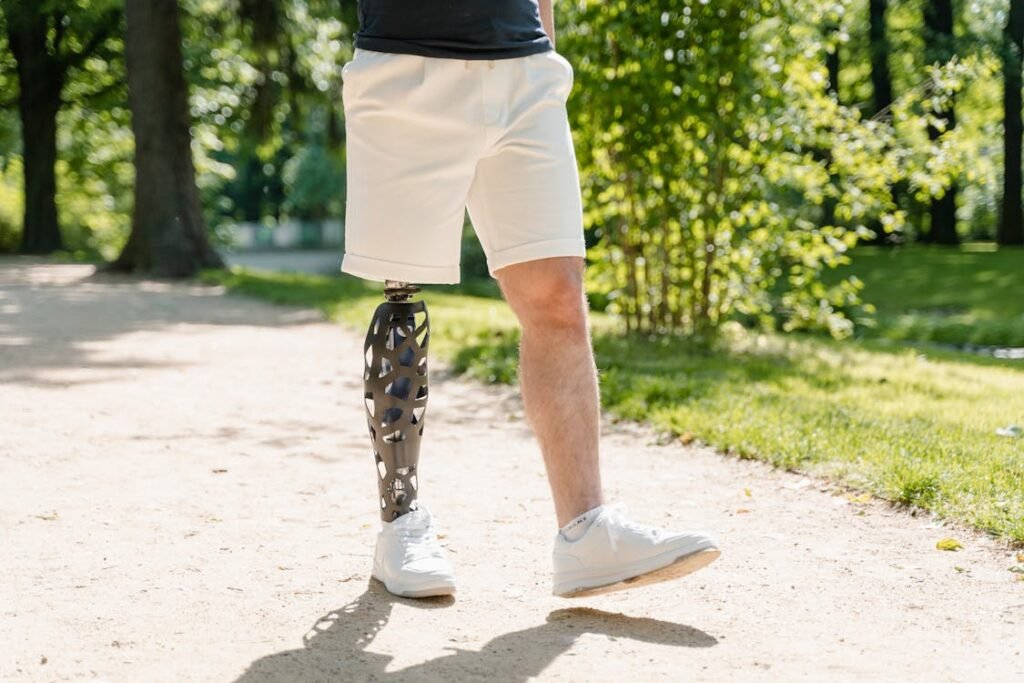
Managing Phantom Limb Pain Through Physical and Neurological Techniques
Phantom limb pain is deeply connected to how the brain and nervous system process sensations. Because the brain still expects to receive signals from the missing limb, it sometimes misinterprets the absence of those signals as pain.
This means that managing PLP is not just about treating the body—it is about retraining the brain. Several techniques can help reduce pain by changing how the nervous system responds.
Mirror Therapy: Rewiring the Brain’s Perception
One of the most effective methods for managing phantom limb pain is mirror therapy. This technique uses a simple mirror to create the illusion that the missing limb is still there.
By placing a mirror between the existing limb and the missing one, the brain “sees” the reflection and begins to adjust its perception.
When a person moves their intact limb while looking in the mirror, the brain receives visual feedback that suggests both limbs are moving.
Over time, this can help reduce the confusion in the nervous system and lessen phantom pain. Many people who practice mirror therapy consistently report a significant reduction in discomfort.
Desensitization and Sensory Exercises
The brain relies on sensory input to understand the body’s position and movement. When a limb is lost, the lack of sensory feedback can contribute to phantom pain.
Desensitization techniques involve stimulating the residual limb with different textures, temperatures, or gentle massage. This helps the brain adapt to the new sensory environment, making pain signals less intense over time.
Some people find relief by applying warm or cool compresses, gently tapping or rubbing the residual limb, or using vibration therapy. These methods help “wake up” the nerves in a controlled way, teaching the brain to process new sensations without triggering pain.
Using a Prosthetic to Reduce Phantom Limb Pain
For many people, wearing a well-fitted prosthetic can significantly reduce phantom limb pain. When the body engages with a prosthetic limb, the brain receives new feedback about movement and position.
This can help correct the mismatch between what the brain expects and what it actually experiences.
At Robobionics, our prosthetic solutions, including Grippy™, are designed to provide comfort, ease of movement, and a natural feel. If you are struggling with phantom limb pain, using a prosthetic could be a step toward relief.
We encourage you to book a free demo to see how the right prosthetic can improve both mobility and pain management.
Neurostimulation and Medication
In some cases, phantom limb pain is severe enough to require additional medical treatments.
Neurostimulation, such as transcutaneous electrical nerve stimulation (TENS) or spinal cord stimulation, can help by sending mild electrical signals to the nerves, reducing pain perception.
Some individuals also find relief through medications like nerve pain relievers or muscle relaxants, though these should always be used under medical supervision.
While these treatments can be effective, they work best when combined with other approaches, such as therapy, stress management, and physical rehabilitation.
Treating PLP requires a holistic approach that addresses both the brain’s response and the emotional toll of chronic pain.
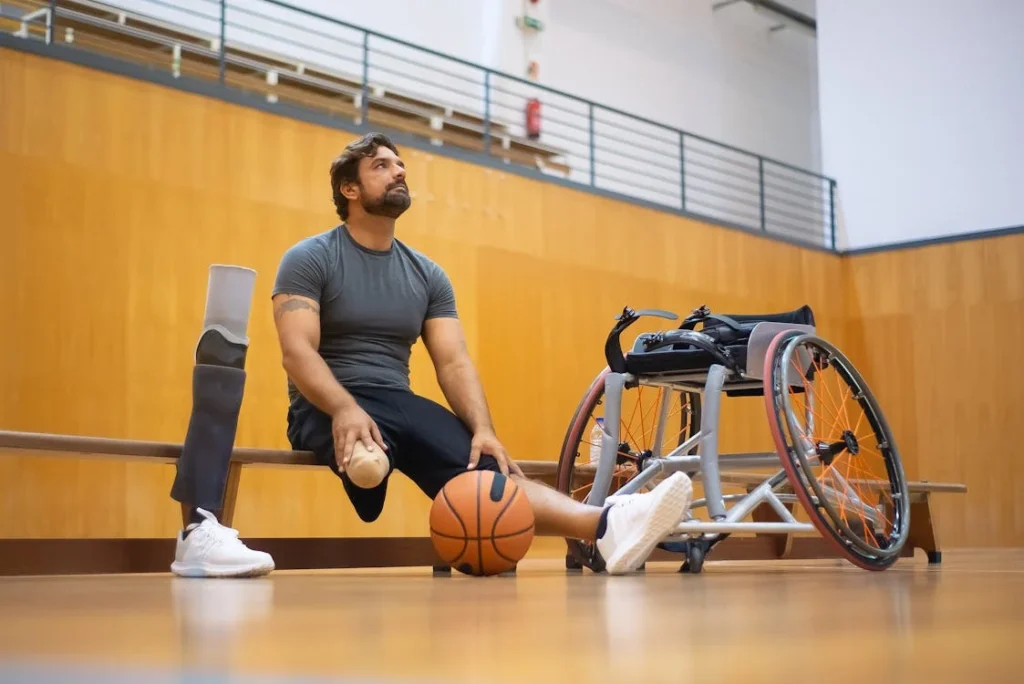
The Role of Sleep and Lifestyle in Managing Phantom Limb Pain
Phantom limb pain is often unpredictable, but certain lifestyle factors can make it better or worse. Sleep, diet, and daily habits all play a role in how the nervous system processes pain.
Making small but meaningful changes to your routine can help reduce discomfort and improve overall well-being.
How Sleep Affects Phantom Limb Pain
Chronic pain and sleep problems often go hand in hand. Phantom limb pain can make it hard to fall asleep or stay asleep, and lack of rest can make pain feel worse.
When the body is exhausted, pain sensitivity increases because the nervous system is more reactive. Over time, poor sleep can lead to increased stress, irritability, and emotional burnout.
Creating a healthy sleep routine can make a significant difference. Going to bed and waking up at the same time each day helps regulate your body’s internal clock.
Reducing screen time before bed, keeping your room dark and cool, and practicing relaxation techniques—such as deep breathing or meditation—can also promote better rest.
If phantom limb pain wakes you up at night, applying warmth or practicing mindfulness exercises may help calm the nervous system.
The Impact of Diet and Hydration on Pain Levels
What you eat and drink affects your body’s ability to heal and regulate pain. Inflammation in the body can worsen nerve pain, so choosing foods that reduce inflammation can help.
Fresh fruits, vegetables, whole grains, and lean proteins support nerve function and overall health. Omega-3 fatty acids, found in foods like fish, nuts, and seeds, have been shown to help with nerve pain.
Dehydration can also trigger muscle cramps and worsen pain sensations. Drinking enough water throughout the day can help keep nerves functioning properly and prevent unnecessary discomfort.
Limiting caffeine and alcohol, especially close to bedtime, can also prevent dehydration and improve sleep quality.
The Benefits of Gentle Movement and Exercise
Although it may seem counterintuitive, regular movement can actually help with phantom limb pain. When you stay active, your body releases endorphins, natural pain-relieving chemicals that help improve mood and reduce discomfort.
Gentle stretching, light resistance exercises, and even activities like yoga can help improve circulation and reduce muscle tension in the residual limb.
For those using prosthetics, learning how to move confidently with the new limb can reduce strain on other parts of the body.
Working with a physical therapist can help improve posture, balance, and coordination, which can prevent compensatory pain in the back, hips, or remaining limb.
Staying active does not have to mean intense workouts—it can be as simple as taking a short walk, doing gentle stretches, or engaging in activities that bring joy. Movement helps shift focus away from pain, improves mental health, and strengthens the body’s ability to adapt.
How Relaxation Techniques Can Help
Chronic pain creates tension in both the body and mind. Relaxation techniques can help reduce this tension and train the nervous system to respond differently to pain signals.
Techniques such as deep breathing, progressive muscle relaxation, and guided imagery can help calm the body and reduce pain perception.
Many people find meditation or mindfulness practices helpful in managing phantom limb pain. These techniques teach the brain how to observe pain without becoming overwhelmed by it, which can make discomfort feel less intense.
Even just a few minutes of relaxation exercises each day can have a lasting impact on pain levels and emotional well-being.

The Emotional Impact of Phantom Limb Pain on Relationships and Social Life
Phantom limb pain does not only affect the person experiencing it—it can also impact relationships, friendships, and social interactions. When pain is unpredictable, it can make it difficult to commit to plans, engage in conversations, or enjoy time with loved ones.
Many people with PLP feel frustrated when others do not understand what they are going through, which can lead to feelings of isolation or withdrawal.
Communicating with Loved Ones About Phantom Limb Pain
One of the most challenging aspects of dealing with chronic pain is explaining it to others. Phantom limb pain is invisible, and because it cannot be seen, friends and family may not fully understand how difficult it is.
Some people may assume that, because the limb is gone, the pain should be gone too. This can lead to misunderstandings and, at times, frustration.
Open communication is key. Letting loved ones know what PLP feels like, how it affects your mood, and what they can do to support you can strengthen relationships.
If you are having a difficult day, simply saying, “I’m in a lot of pain right now, and I need some rest,” can help others be more understanding. Educating those around you about phantom limb pain can also help reduce feelings of isolation.
Overcoming Social Anxiety and Fear of Judgment
Many people with limb loss worry about how they will be perceived in social settings. The idea of going out in public, meeting new people, or explaining an amputation can create anxiety.
When phantom limb pain is involved, these worries may feel even more overwhelming, as discomfort can strike at any time.
It is important to remember that you are not defined by your amputation or your pain.
Confidence grows with time, and taking small steps—such as going out with trusted friends, attending events at your own pace, or practicing responses to common questions—can help build self-assurance.
If social situations feel overwhelming, seeking support from a therapist or a peer support group can be incredibly helpful.
The Importance of Finding a Support System
Connecting with others who have experienced limb loss and phantom limb pain can be one of the most powerful ways to cope emotionally.
Many people find comfort in talking to someone who truly understands what they are going through.
Peer support groups, whether in person or online, provide a safe space to share experiences, ask questions, and learn from others who have successfully navigated life with an amputation.
At Robobionics, we encourage individuals to seek out community support as part of their healing journey. Surrounding yourself with people who uplift and understand you can make a world of difference in overcoming the emotional challenges of phantom limb pain.
Conclusion
Phantom limb pain is more than just a physical sensation—it affects emotions, relationships, and overall well-being. The unpredictability of PLP can be frustrating, but relief is possible. By understanding how pain and mental health are connected, you can take proactive steps to manage both.
Healing requires a combination of physical techniques, emotional support, and lifestyle adjustments. Mirror therapy, relaxation techniques, and movement can help retrain the brain’s response to pain. Managing stress, improving sleep, and maintaining a healthy diet can also make a significant difference. Just as important is seeking support—from loved ones, therapists, or peer groups—so you do not have to face this journey alone.
Most importantly, know that phantom limb pain does not define you. While the road to relief may take time, every step forward brings you closer to a more comfortable and fulfilling life. At Robobionics, we are committed to helping individuals regain independence and confidence through advanced prosthetic solutions and support. If you are looking for guidance, reach out to us today—we are here to help you move forward with strength and hope.



